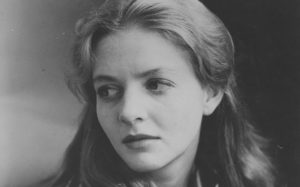In the meantime, here are a few titles from my recent reading list:
The Men in My Life: A Memoir of Love and Art in 1950s Manhattan - Patricia Bosworth
This is a fascinating glimpse into a woman's life in the art and theater world of 1950s New York. Patricia Bosworth was born into a wealthy San Francisco family. Her father, attorney Bartley Crum, saw his career and fortunes dive after he defended the Hollywood Ten (Hollywood directors and writers who were blacklisted as Communists during Senator Joseph McCarthy's Red Scare fear campaign - Dalton Trumbo, Edward Dmytryk, Herbert J. Biberman, Lester Cole, Alvah Bessie, Ring Lardner Jr., John Howard Lawson, Albert Maltz, Samuel Ornitz, and Adrian Scott.) Crum moved the family to what he hoped was a more open and understanding New York, but he never really bounced back.
Complicating matters was his drug and alcohol abuse, which landed him in multiple unsuccessful dry-out attempts. He did manage to acquire a few high-profile clients, including actors Rita Hayworth and Montgomery Clift, who would visit the house and gave young Patricia a glimpse into Manhattan's film and theater world. She would later join the famed Actor's Studio and work with, or at least brush up against, actors and artists like Steve McQueen, Marilyn Monroe, Diane Arbus, Gore Vidal, and Helen Hayes, among many others. Her most notable film role was a small part in The Nun's Story, starring Audrey Hepburn. But Bosworth's tale of that time on a movie set in Rome was far from glamorous, coinciding with a harrowing personal and physical event that shines a light on how far women have come since the 1950s and how we need to keep it that way.
Family tragedy was compounded when Patricia's younger brother, Bart Jr., committed suicide. It is clear to the reader that Bart was homosexual. After he and a friend were found in a compromising position at school and the friend subsequently killed himself, Bart sank into a deeper and deeper depression until he ultimately chose to take his own life.The family seemed helpless or oblivious to Bart's plight. Although Bosworth doesn't address issues of homophobia and mental illness directly, there are echoes of depression, addictive behavior, and denial of true self between both the father and son. What is even more tragic is that young people in Bart's position sometimes still feel compelled to take their own lives today.
Bosworth ultimately gave up acting to pursue her real passion, writing, and she has become well known for insightful biographies of Marlon Brando, Montgomery Clift, Jane Fonda, and Diane Arbus, as well as writing in more detail about her father and the Hollywood Ten (Anything Your Little Heart Desires: An American Family Story, 1997).
I found her story fascinating and am eager to now try some of her other biographies.
 |
| Patricia Bosworth in her Actors Studio days |
Echoes From the Macabre - Daphne Du Maurier
I have always loved Du Maurier's Rebecca and have read Don't Look Now before in some other edition, but I don't think I had ever read the original version of The Birds, which was the basis for the classic Alfred Hitchcock horror film. Set in England the story is just as scary, and even more bleak, if that is possible. The rest of the stories are also very good, in a suspenseful, and in some cases, very creepy kind of way. They include: The Apple Tree, The Pool, The Blue Lenses, Kiss Me Again, Stranger, The Chamois, Not After Midnight, and The Old Man. I honestly don't want to even give a summary for any of these, as I think it is best to read them with no preconceptions. It is clear to see why Hitchcock loved Du Maurier's sometimes twisted take on life.
The Haunting of Hill House - Shirley Jackson
A true classic of horror, which tells the tale of four paranormal researchers who decide to spend some time in one of the most horrible-looking and possibly -acting houses of all time - Hill House. Dr. Montague, an erudite ghost chaser, enlists the help of three young people to prove that Hill House is truly haunted and evil. What could go wrong? Luke, who is a descendent of the original owner and builder of the terrible manse, chooses to treat the experiment as a joke. The beautiful and mysterious Theodora's motives to being there are unclear, but it is likely that she approaches the situation as a thrill seeker. Eleanor, an unhappy and possibly unstable young woman, hopes that Hill House will be the exciting new chapter in a previously dull and uninteresting life. When the cook and her husband tell the guests that they won't stay after sundown that should be the quartet's first clue that something is very wrong about Hill House.
I Shock Myself - The Autobiography of Beatrice Wood
To end things on an up note, I am including this wonderful autobiography of the little-known artist and ceramicist Beatrice Wood. Sometimes called "The Mama of Dada," she died in 1995 at the age of 105. During her long and eventful life she associated with some very interesting people, including Marcel Duchamp, Francis Picabia, J. Krishnamurti, and the art collectors Louise and Walter Arensberg. Wood is also considered to be the inspiration for the the woman who is loved by two men in Jules et Jim, which was written by Henri-Pierre Roché, who she was involved with. Their mutual close friend Marcel Duchamp fills out the third side of the eternal triangle. What was Wood's secret to her long and storied life? "I owe it all to chocolate and young men." Check her out. She was pretty amazing.

The colorful Beatrice Wood in her studio

0 comments:
Post a Comment